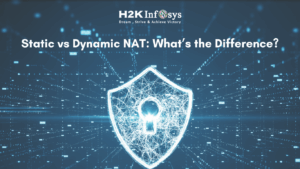The process of locating potential flaws, errors, and other vulnerabilities in computers, software, or networks is known as cyber security testing. An organisation can create and implement a plan for fixing vulnerabilities and lowering its overall exposure to cyber risk based on the test’s results. Check out the online cyber security training to learn more.
The Importance of Cyber Security Testing
The digital assault surface of businesses is always growing. In already growing IT infrastructures, the emergence of cloud computing, bring your own device (BYOD) rules, and the Internet of Things have created new possible attack vectors.
New vulnerabilities may be developed or found as IT systems develop, whether by authorised security researchers or cybercriminals. Frequent cyber security testing helps a company identify and patch any security holes in its systems before an attacker can exploit them.
Types of Cybersecurity Testing
Companies deal with a spectrum of possible cyber threats and have a variety of IT systems. There are several forms of cyber security testing available to assist in locating possible weaknesses in these settings, such as:
- Penetration tests: A cyberattack against an organisation is simulated through the use of penetration tests. These can be carried out from within the network to check for potential weaknesses to insider attacks, or from outside the network to simulate an external threat actor.
- Vulnerability Scans: An automated evaluation known as a vulnerability scan searches apps for well-known and widespread flaws. In order to determine whether any running apps may be susceptible, the scanner will gather information about them and compare them to a list of known vulnerable programs.
- Mobile Application Tests (Android/iOS): Mobile application tests look for any security holes in iOS or Android apps. This covers hazards specific to mobile devices as well as basic security issues, like not encrypting sensitive data before storing it or sending it over the network.
- Web Application Security Tests: These tests look for any weaknesses in the front end and back end of an online application. Common vulnerabilities found in online applications are SQL injection and cross-site scripting (XSS).
- API Security Testing: Application security interfaces (APIs) are evaluated for potential vulnerabilities through API security testing. For instance, an API can unintentionally reveal private information or mis-authenticate a user submitting a request.
- Desktop Application Tests: Desktop programs could have security holes that could be used to reveal private information or cause the program to fail. It is also possible to test these programs in order to find and fix these issues.
- Tests for Wireless Network Penetration (Wi-Fi): Weak passwords and insecure protocols (WEP or WPA) are two examples of security issues that can affect wireless networks. In order to determine whether a wireless network is indeed vulnerable, a Wi-Fi penetration test will search for these flaws and make an effort to attack them.
- Social Engineering: Phishing and other social engineering assaults deceive their victim into fulfilling the attacker’s requests. A social engineering test can assess how susceptible a company is to phishing attempts or ascertain whether staff members will divulge private information in the event of a vishing assault.
- Cloud (AWS/GCP/Azure) Environment Penetration Tests: Companies are using cloud infrastructure more and more, and unlike traditional on-premise data centres, cloud environments bring special security challenges. Penetration testing for cloud environments searches for these particular security flaws, like improperly configured security or insufficient access control.
- Reviews of Secure Code: The Secure Software Development Lifecycle (SSDLC) should, in theory, incorporate security at every stage. Before software is put into production, secure code review looks at the code to try and find and fix vulnerabilities.
- Penetration testing for Docker/Kubernetes (K8S): Containerized apps provide particular security challenges, just like cloud systems do. This type of penetration test searches for deployment vulnerabilities, misconfigurations, or possible container escapes.
- Adversarial Simulation/Red Team Simulations: Adversarial simulation, often known as red teaming, conducts a thorough evaluation of an organisation’s cybersecurity. This is frequently done to assess how well an organisation can defend itself against a certain threat or threat actor.
Deliverables of Cyber Security Testing
Informing the client of their exposure to cyber risk and giving them the tools to resolve the issues found and strengthen their security posture are the two main objectives of cybersecurity testing. The following are some of the main outcomes of cybersecurity testing:
- Executive Summary: C-suite executives want to know if their company is vulnerable and if the money they spent was well spent. They don’t need to know the specifics of the test. The main findings and metrics from the security test will be presented in an executive summary.
- Detailed Results: A report should contain comprehensive details regarding the tests conducted and their conclusions in addition to a summary. The organisation should be able to evaluate its cyber risk and replicate findings as a result.
- Remediation Recommendations: Security testers possess specialised knowledge and an in-depth understanding of the vulnerabilities that have been found. They can then make recommendations about how to mitigate or resolve the challenges in light of these.
- Debriefing Session: The testers ought to provide a live debrief in addition to a written report. This gives the client the opportunity to discuss the findings and ask any questions they may have.
Conclusion To learn more about how a penetration test can enhance your organisation’s security posture, check out the online cyber security course.




























